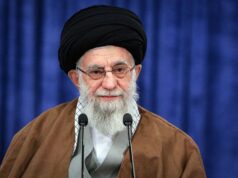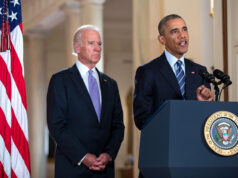The United States is planning to hold a mine sweeping exercise near the Persian Gulf in September focusing “on a hypothetical threat to mine the international strategic waterways of the Middle East, including the Red Sea, the Gulf of Aden, the Gulf of Oman, and the Persian Gulf.” Cooperating with 20 other nations in the drill, the United States seeks to deter Iran’s threat to close the Strait of Hormuz, a choke point in the Persian Gulf through which a large portion of the world’s oil supply passes through. Refusing to be cowed by the exercises, Iranian Rear Admiral Habibollah Sayyari stated that Iran would not be affected by the drills and is in complete control of the region.
Since last year, Tehran has continued to threaten to close the Strait of Hormuz and block even “a single drop of oil” from passing through, according to an Iranian navy chief, in response to U.S. pressure to end its nuclear program. Currently, it is estimated that Iran could block the Strait with well over 5,000 mines. That Iran’s parliament passed a draft law in late July to close the waterway only adds to the tension in the region.

The Iranian Navy test firing the Nasr-1 anti-ship cruise missile. |
As David Crist, adviser to U.S. Central Command, notes, Iran would destroy its own oil exports if it blocked the Strait and thus doing so would be a weapon of last resort for the regime. However, the United States still takes the threats seriously. In response to Iranian calls to close the Strait, last month the U.S. deployed unmanned underwater vehicles specialized in mine detection to the Persian Gulf in addition to the carriers already present in the area.
Not to be outdone, Iran is focusing on building its capabilities, recently investing in an arsenal of anti-ship missiles and fast-attack boats and submarines. Tehran is also developing “naval ambush” tactics that could threaten U.S. assets in the Gulf, as well as tactics to launch a “devastating first salvo on US Navy warships” in order to deter further sanctions or military action. While such tactics are capable of harming American capabilities in the short term, as former military adviser to the Pentagon and State Department Michael Eisenstadt contends, American forces would quickly recover. “The outcome would never be in doubt when you’re dealing with the most powerful military in the world,” he notes. Still, as Eisenstadt points out, “Iran would be able to point to a [psychological] victory.”
Iran’s insistence on continuing its controversial and dangerous nuclear program will only lead to more tension and build-up in the Persian Gulf. As both sides flex their muscles, the cost of a potential war will continue to rise.





